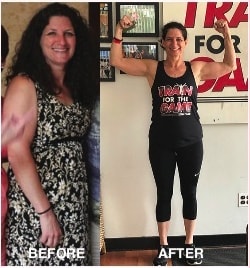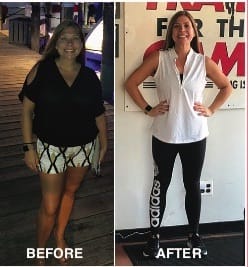For young athletes who specialize in playing a single sport, a higher risk of injuries is a serious concern. In one 2015 study focused on 1,190 athletes ages 7 to 18, sports-specialized training was shown to be an independent risk factor for injury.
In another study, looking at 546 athletes from Kentucky, specialized female basketball, soccer and volleyball players had a 50 percent higher chance of overuse knee pain. And it’s not just physical, early specialization is also associated with psychological burnout.
Despite all this, up to 30 percent of youth athletes today play a single sport to the exclusion of others.
“While sport specialization has its well-documented negatives, young athletes continue to pursue the pathway,” says Neeru Jayanthi, co-director of Emory Healthcare’s Youth Sports Medicine program. So, rather than try to dissuade young specialized athletes, Jayanthi works with them to make the best of the situation.
“I think it’s probably naive to just say, all right, we’ll take this adolescent, high-level, single-sport player and say, now go play another sport. I think you just must embrace and work with them,” Jayanthi says.
In an article in the journal Sports Health, Jayanthi and others wrote that young athletes who focus solely on one sport should be taught to recognize injuries early — for instance, pain or swelling that persists beyond one week — and athletes, coaches and sports medicine practitioners should monitor how much kids train and their neuromuscular and movement patterns.
“How do you keep them healthy and give them the right tools to be successful?” he asks. That should be parents’ and coaches’ focus, and part of that is discussing the increased risk of injury for sport-specialized athletes.
How much should kids train?
One easy principle to follow, says Stacey Schley, a physician and co-author on the article and Female Athlete Program fellow at Boston Children’s Hospital, is that youth athletes should train fewer hours per week than their age.
“So, if they’re 12 years old, we know that if they train more than 12 hours per week, that also increases their risk of overuse injury,” Schley says.
A second key is encouraging free play, such as swimming in the summer or playing at recess. “There’s a principle called sports training ratio, essentially the ratio of organized training in sport versus recreational free play, and if that ratio exceeds two to one, we know there’s this increased risk of overuse injury,” Schley says.
Doing other sports or activities as a family can be helpful, as well, says Kristin Wingfield, a sports medicine physician at UCSF Medical Center. In addition, “kids shouldn’t be playing up a level or age group, they shouldn’t be playing on several teams at the same time.”
The right amount of time for practice and playing might not always be the same over the course of an athletic career, Jayanthi says. During the adolescent growth spurt, typically at ages 9 or 10 in girls and 11 or 12 in boys, young athletes are at higher risk for problems because injuries tend to occur at vulnerable spots, such as growth plates at the ends of bones and where tendons attach.
“Young athletes should train based on their stage of development, where the most intense competitive training is when they are past their peak height velocity or growth spurt,” Jayanthi says.
Why are diverse motor skills important?
Specializing in one sport develops mastery in a small subset of motor and movement skills but generally falls short of developing the individual as a whole athlete. Playing other sports develops diverse movement skills, ones that can be applied to the original sport.
If it’s not possible to bring a young athlete to another sport, the best alternative might be to bring another sport, or at least aspects of it, to the athlete.
To illustrate the point, perhaps because he also leads Emory University’s Tennis Medicine Program, Jayanthi uses youth tennis.
“In a tennis academy setting there may be full-time or single sport high level junior tennis players, and within that they might not be playing organized basketball or soccer or other sports,” he says. “But they can use drills or warm-ups that draw upon the skill sets of other sports — learning how to dribble or shoot (a basketball), how to move to kick a soccer ball, how to utilize a different movement pattern, and playing defense.”
And that’s really the point of doing other sports, he adds, exposure to different movement patterns.
Differences before and after puberty
To evaluate the differences in biomechanics between sport-specializers and multisport athletes as they mature, a group of researchers from Cincinnati Children’s Hospital selected matched subjects from a database of 1,116 female adolescent basketball, soccer and volleyball athletes in 2019.
The final group of subjects, 158 in total, were made up of an equal number of sport-specialized and multisport athletes. To test differences in movement skills between the groups, the subjects were asked to drop-jump off a box just over a foot high and land on a plate that measured landing force with a 3D motion analysis system. The athletes were assessed twice, before and after puberty.
The results, published in the journal Frontiers in Pediatrics, suggested that sport-specialized female athletes displayed biomechanical changes pre- to post-puberty that may increase risk for injury when compared with multisport female athletes. Specifically, the female athletes who specialized pre-puberty were more likely to land in ways that put extra pressure on their knees.
Greg Myer, director of the Emory Sports Performance and Research Center and senior investigator on the study, suggests that sport specialization reduces neuromuscular adaptability, which can lead to problems.
Without that adaptability, “if someone hits me when I’m trying to cut or pivot, I’m not as neuromuscularly sound, or adaptive, or responsive, to absorb that, tolerate and redirect that, and use that to maintain ideal movement mechanics,” he says.
If children and teens are going to specialize early, Myer emphasizes, then sports medicine practitioners, coaches and parents need to give them “opportunities to develop” other types of movement patterns.
For Myer, enhancing movement skills starts with achieving what he calls a primal level of muscle strength through resistance training. Ideally, this starts early, before bad movement habits develop.
Kiki Prather, a 17-year-old volleyball player from Flowery Branch, Ga., started working with Myer at Emory as a high school freshman. Prather, who has focused on volleyball exclusively for the past six years, sees the injury prevention benefits: “Especially with specific things like serving, I notice the way I’m positioned and how to make sure I don’t overextend or land wrong coming off a jump, or even just staying low.”
But there’s more to it than that. “The training has helped my jumping, and I feel a lot more stable and have better technique jumping and landing,” she says. “I know a lot of my friends from other schools, they don’t do anything like this, and I’m sure they don’t think of things that we’ve been made aware to do.”


